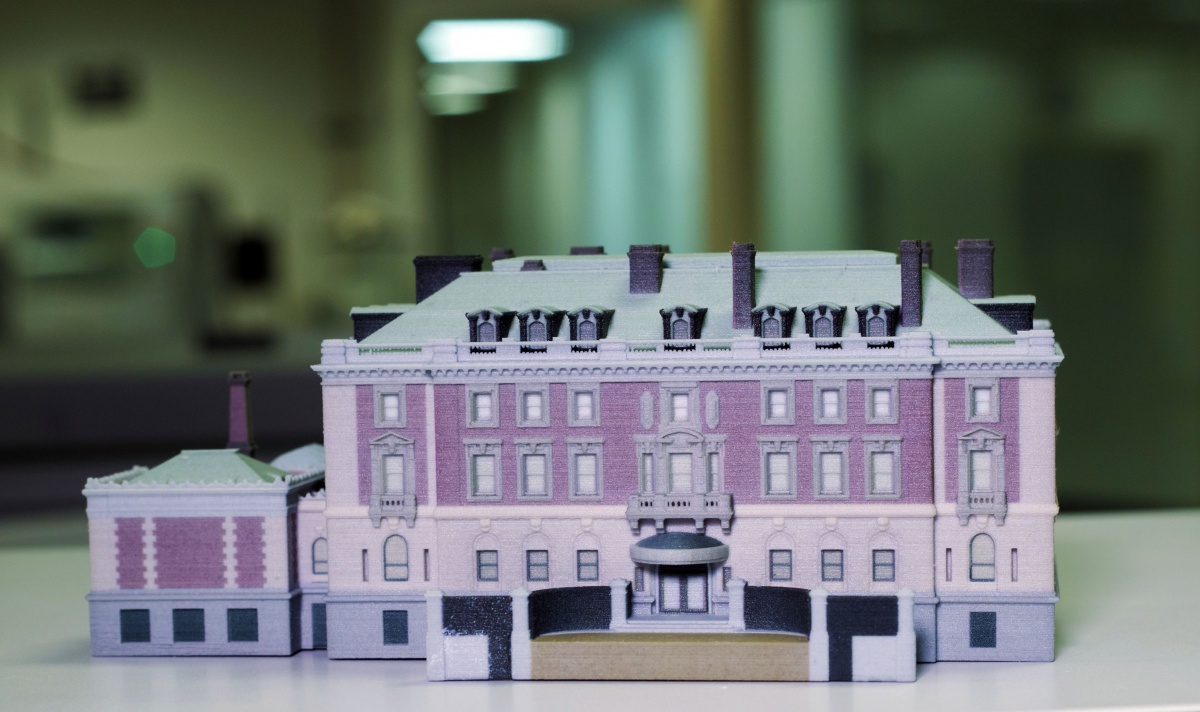In collaboration with the Cooper Hewitt Smithsonian Design Museum, 3DS is proud to be a part of scanning and creating the 3D printable file of the Andrew Carnegie mansion on New York’s Upper East Side. As home to the Cooper Hewitt, the mansion was built with the first structural steel frame ever to appear in the United States and stands as a monument of both architectural and cultural significance. The fact that the Carnegie mansion is now available in digital form with full details, full color, and full 3D printability means that the building’s historical past is now linked to an exciting, technological future.
Last night, 3D printed models of the Carnegie mansion graced each of the tables at Cooper Hewitt’s National Design Awards Gala. Caroline Baumann, Director of Cooper Hewitt, acknowledged 3DS for creating the "exceptional pieces," and encouraged the audience to download the file from their website and "go wild with the mansion!"

Providing this free 3D printable file is part of a larger push by the museum to make design more accessible to all. From their new Cooper Hewitt font, to collection data, to educational programming and more, Baumann was proud to announce: "We're all about providing access to great design, and we can't wait to see what you do with these unique assets."
With the tremendous recent advances in 3D scanning and design, the Cooper Hewitt has been exploring how it can incorporate 3D technology into its story and history. Through collaboration with 3DS, the Cooper Hewitt found its niche by creating an exact 3D model of the museum’s Carnegie mansion home. In the age of Google maps and street views, the new possibility for virtual tours is a natural fit, but a fully accurate 3D model lends itself to so much more. With this 3D model, the Cooper Hewitt is making the museum space even more accessible for exhibition planning and architectural study, among other practical and fun applications.
The scanning took place during a three year museum closure dedicated to renovation and exhibition reimagining. The scanning team began using a lidar scanner to capture data from every part of the interior, exterior and rooftop. This technology uses a remote sensing device to measure distances using reflected lasers. The resulting data can then be uploaded to a computer to form a cloud of “points” – each representing one distance. When joined together, the points create a mesh that forms an initial working surface. A textured surface is then matched to the points from hundreds of pictures, ultimately creating a fully detailed and colored replica. Using Geomagic Solutions products, a team of 3DS artists and engineers skillfully transformed the real world lidar scan data into data sets for 3D visualizations and 3D printable files that are both dimensionally accurate and artistically beautiful.
After years of having its doors closed, the Cooper Hewitt is excitedly preparing to reopen its gallery this December and 3DS is happy to be a part of the new special collection. For a visual walkthrough of the scanning and file design process, check out the brief video below, and of course, claim your model today! How could sharable 3D content benefit an organization near you?